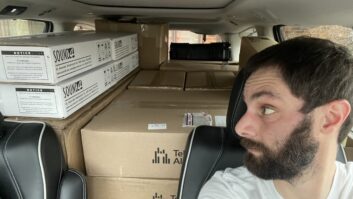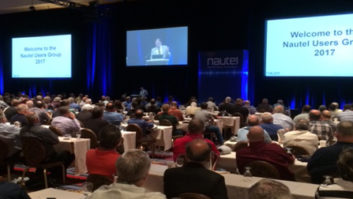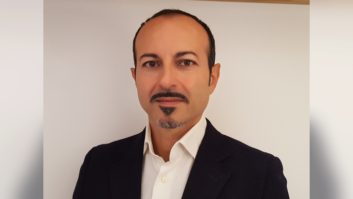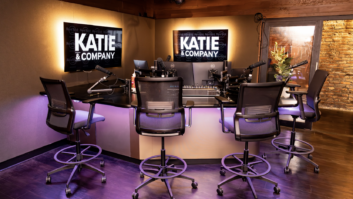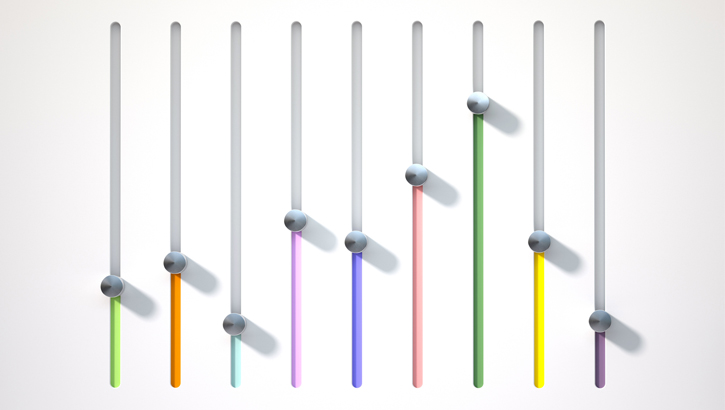
At Radio World we cover trends in equipment throughout each year, but I think it’s important also to attempt a deeper dive periodically in a handful of “core” categories like transmitters, codecs and processors.
One of those flagship categories is consoles, which we explored more than two years ago; so in a current Radio World ebook you can read Q&As with representatives of six technology sponsors that make radio consoles and control surfaces; you can find it here.
I also approached several respected engineers who have deep experience in commercial and public radio, to invite their thoughts as users. Here’s what they told me.
Notable trends

For Steve George, the most significant trend in radio console design is flexibility.
He is executive vice president of engineering and systems for iHeartMedia, the largest radio broadcaster in the United States. “Modern studios are multifunctional spaces, serving diverse purposes throughout the day,” he said.
“For instance, a studio might host a multi-person live morning show, followed later in the day by a podcast recording, and then transitioning to producing a network sports broadcast in the evening. To accommodate these varied needs, consoles must be highly adaptable.”
He noted that advanced scripting capabilities enable consoles to reconfigure themselves based on the current use case, instantly.
“This level of flexibility not only optimizes workflow by instantly setting up the console for each user and workflow. It also extends the capabilities of a ‘single button press’ to control external devices in the studio, such as lighting, signage and video,” George said.
“By automating these adjustments, consoles empower broadcasters to seamlessly transition between different production scenarios.”
Rob Bertrand is an technology consultant, focused on bringing engineers together to deliver technology as a service to the radio industry. He has worked in public and commercial radio for more than 20 years. [Subsequent to our interview he joined Inrush Broadcast Services as a partner.]
Bertrand thinks the most significant question for consoles today is figuring out how radio “studios” exist in this new world of remote work, emerging AI integration and increased pre-recorded content — “all amid a persistent desire to continue to deliver live, meaningful connection with listeners when it can have the greatest impact,” he said.
“This all means that there are more layers than ever to consider and integrate when considering a ‘console’ solution for stations.”
In the view of Robert Combs, corporate director of engineering for Cumulus Media and regional DOE for its Gulf States region, the console now is, essentially, a studio user interface for your audio network.
“Thirty years ago, we crimped the wires and plugged in the left and right audio cables and ran miles of multi-pair cables everywhere spending hours punching cables to punch blocks. Now we connect a network cable, and it opens up the entire network to be used wherever it is needed,” he said.
“On some consoles, every button can be programmed to do whatever you need it to do. You have GPIO for everything from controlling other rooms to starting a new pot of coffee, and you don’t have to wire up 15 different relays and create wire harnesses that stretch from one end of the building to the other. It is all in the configuration.”
Gary Zocolo is the chief engineer for Radio One Cleveland and was chief at Cumulus Nashville and a member of its buildout team. In a recent project, Radio One used scripting for display monitors that track important station parameters.
“We are also working on advance scripting to allow buttons on the console to control the profanity delay. We also had custom software created for 23-inch monitors above studio doors. This display or ‘kiosk’ software allows station logo branding and switches to a blinking ‘on-air’ message when the studio mics are open while maintaining the branding.” The displays are capable of displaying GIFs too.
Fiore Confuorto is owner and technical director of consulting firm Broadcast Service Italia. For him, today’s consoles provide a simplified and intuitive working experience.
“Modern consoles feature a compact and attractive design with clear indicators, enabling a direct approach without distractions. Additionally, differentiated lighting for various functions, powered by innovative LED technology, allows users to quickly identify and understand the controls,” he said.
“Another important aspect is the ability to manage multiple functions and devices within the control room directly from the console. This centralized and automatized approach optimizes workflow and allows operators to concentrate on their primary tasks while minimizing the risk of errors.”
Michael Meadows — director of technology for WOSU Public Media at The Ohio State University and former chief of several stations in Ohio — also cited the transition of consoles into control surfaces.

“The actual audio services and GPI control are networkable IP audio via blades or nodes to easily move audio around an entire facility, making the whole facility a network of audio ‘consoles’ with any audio source available at any location,” he said.
“This also creates the ability to do away with the physical console and just have virtual consoles on a touchscreen monitor if the user would like to minimize physical equipment.”
Commonly cited as notable capabilities of recent years were the ability to work and control functions remotely; the inclusion of codecs, processing and control in the AoIP environment; and integration with various playout software systems and external devices.
“I’m starting to see a lot of requests for Bluetooth capability in our studios now, and this has been available in some consoles for a few years,” said Robert Combs.
“The technology is getting better for AES67 as well. Until a few years ago, it was still very difficult to get equipment from different manufacturers to work together. This has become much easier to set up in the last few years, but there is still a lot of work that needs to be done on this.”
Let’s get virtual
Steve George emphasized the migration to audio over IP, which has transformed the traditional console into a software-based product with a physical surface that provides tactile control over the software engine.
“This shift packages a powerful console in a more compact, flexible form factor,” he said.
“In a live show environment, the tactile feedback provided by a physical console with faders remains crucial for talent or producers, allowing them to maintain control through feel, while also staying engaged with other team members and guests. However, in other settings, a touchscreen can serve as an effective interface, offering similar functionality with the added benefit of a smaller, more adaptable footprint.”
Historically, George said, small production studios were constrained by the limited size of consoles, which typically could handle only a few channels and took up valuable space.
“Today, thanks to virtualized consoles, a single 24- or 32-inch touchscreen can control a system with 20 or more channels and advanced features. This innovation allows talent to operate a powerful console within a compact studio environment, similar to that of a larger, on-air studio.”
Robert Combs agreed that the growth of virtual has been important.
“While this is not a new technology, it is finally becoming an asset in the daily studio work, and not just something used for a remote situation,” he said.
“As with everything else in the world of radio, we tend to be years behind the new trends in the electronics world. As we start to consolidate studios and we venture into containerizing everything, it only makes sense that the console goes in that same direction.”
With new studio buildouts, Combs said, companies are looking for efficiencies in space usage. “The virtual console will allow you to set up a studio wherever and whenever you need one.”
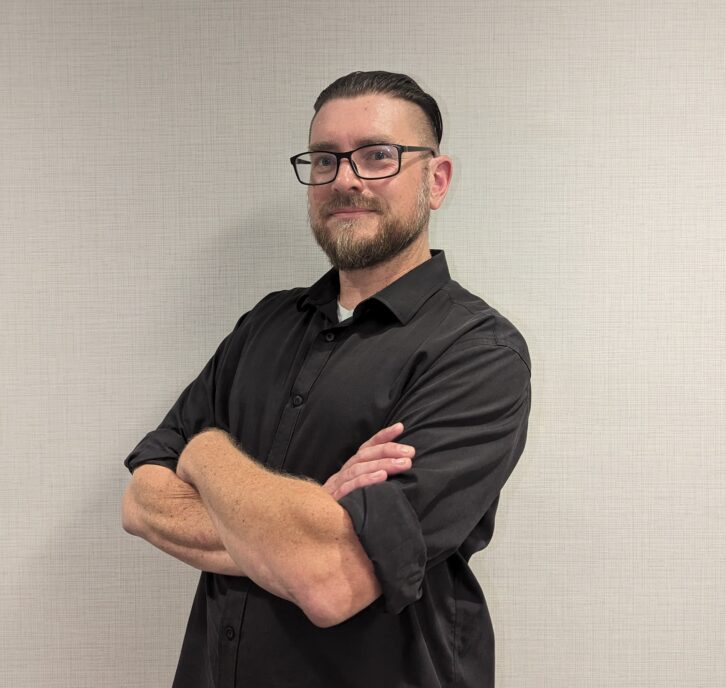
Jeff McGinley agrees that virtual consoles have been a game-changer for new projects. He is vice president of engineering for SummitMedia, overseeing broadcast engineering for its nine markets. He says current versions with webRTC capabilities have upped the game further by taking away the need for hardware codecs to transport the audio.
“Having the ability to go on the air from anywhere with a laptop and internet connection has opened up new possibilities for us that our sales teams have been able to monetize with new clients,” McGinley told me.
Factors beyond the boundaries of radio accelerated some of these changes. Rob Bertrand said COVID taught radio that people enjoy working remotely, that it can be done effectively, and that when it comes to broadcast, listeners can hardly tell the difference.
“This led to an explosion in the use of prosumer console solutions such as the Rode RodeCaster console and audio interface. It worked so well in the home that now they are rapidly finding their way into the studio. Broadcasters are starting to consider much more carefully just how important a ‘professional’ traditional console is for a production space versus a more cost-effective prosumer interface,” he said.
“Certainly, for the major traditional consoles, being able to seamlessly integrate with a number of remote codecs and easily manage mix-minus return feeds on the fly is more important than it’s ever been.”
Gary Zocolo said that hybrid and remote workflows have largely reduced the need for massive office spaces.
“It has also allowed experts from sister markets to have a significant hand in operations. Remote voicetracking also makes use of remote workflows allowing talent to do content creation from home or anywhere else in the world.”
Implications
I asked my respondents to expand on the implications of these developments for daily engineering and as well as buildouts.
“It challenges the engineer to think more efficiently with regards to operations,” replied Michael Meadows.
“You don’t need large consoles with many faders for individual sources. Networkable audio allows the user to use fewer faders for sources and control with the ability to feed multiple services both over the air and streaming.”
Fiore Confuorto noted that modern offices are no longer designed with infrastructure solely focused on audio considerations.
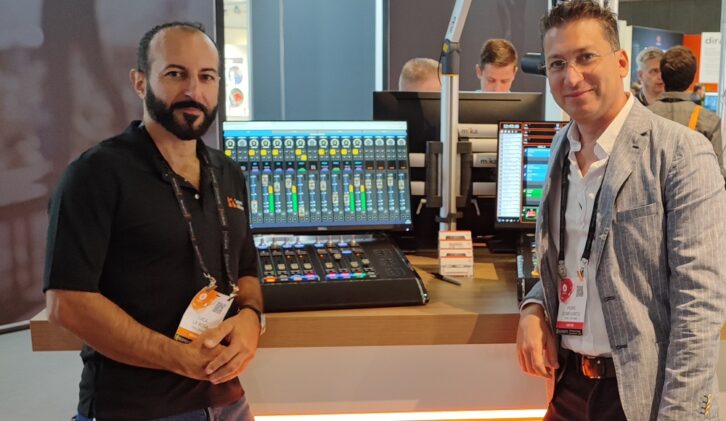
“Instead, we are increasingly moving toward designs based on data networks, reflecting the dominance of AoIP and the centralized control of equipment in today’s environment.”
“The evolution of consoles changed the planning of facilities,” said Zocolo. “Far less wiring is required. This is time- and cost-saving.”
For example, for a recent studio move, the Radio One team was under a tight five-week deadline from unboxing equipment and materials to being live on the air.
“Our space was not ready until that time clock was already ticking. We met the deadline and had an extremely smooth transition from the old analog/digital hybrid facility to the total AoIP new facility. It was not noticeable on air to anyone. We did that by having multiple methods of transmission to the four stations’ respective transmitter sites. Internet and a genuine licensed microwave system made that possible.”
Said Robert Combs, “I cannot tell you the last time I soldered a XLR connector, other than mic cables, to connect to a console. Even most of the analog consoles are using RJ45 connections these days. And everything is network GPIO and internal mix/minus.
“Gone are the days of the need for a 48-channel console; you can do everything with eight to 16 channels, maybe 24, with profile changes and logic control devices offered by most console manufacturers.”
For Steve George, “AoIP has revolutionized console/surface installation in studios. Compared to analog installations of the past, the amount of physical wiring required is significantly reduced. A smaller set of network cables can seamlessly integrate the studio into the broader audio routing system. For repeated installations using the same console design, standardized wiring harnesses can streamline the process further.”
AoIP, he said, supports radio’s need for greater flexibility, scalability and remote capabilities. Console changes can be made via software and supported remotely, allowing engineers to implement changes and diagnose problems without having to be on-site at the studio.
“While there may be a learning curve for engineers new to IP consoles, taking advantage of manufacturer training and support, as well as developing networking skills, is crucial. A robust network infrastructure, including redundancy and cybersecurity measures, is essential for reliable AoIP operations.”
Jeff McGinley noted that most consoles now have standardized on using RJ45 jacks for both the network and audio, making it as easy as plugging in an adapter to interface with other audio devices. “I thankfully have been able to retire my Molex crimper and don’t have to worry about hand cramps anymore.”
Partly cloudy
Today, software- and cloud-based mixing are changing these dynamics further.
Said McGinley, “The current trend is to have everything run in containers, either on a local server or on a hosted cloud service. A number of items are already offered in this manner throughout the air chain. This will certainly mean that in the future we will see more virtualized consoles versus physical hardware, at hopefully a cheaper price point as well.”
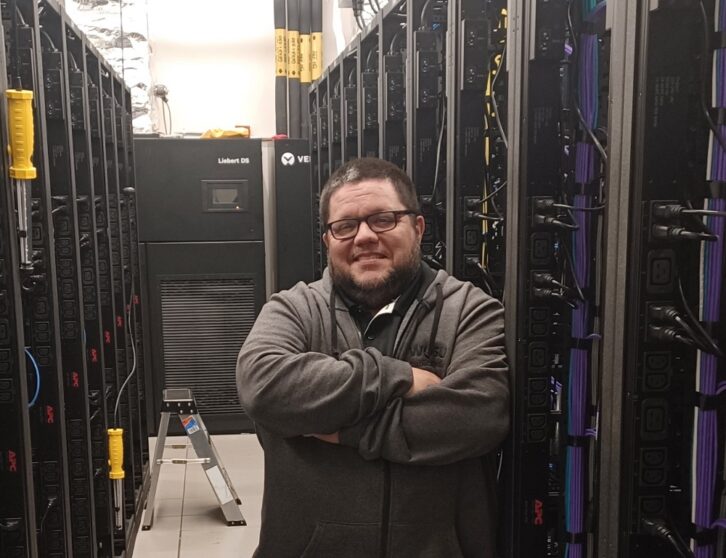
Robert Combs sees such changes as inevitable. “While software-based mixing still has its issues, especially when it comes to redundancy, there will be a time when the vendors cannot justify the cost for hardware any longer,” he said.
“Manufacturers are already having a difficult time keeping parts on the shelf just to service what is already being used, and every year a new version of something has to be created or retooled due to parts not being available anymore.”
Cloud-based workflow has its advantages, Combs said, though he worries about the cost.
“These companies definitely know what services they offer and know that there are not many choices if you want reliability. In my mind, the biggest fear is what happens to everyone who utilizes the cloud when a U.S. or world-wide internet issue comes up and takes everything down. That is not a question of if, but when.”
One of the biggest challenges in deploying cloud-based solutions — automation systems, mix engines or collaboration platforms — is that of latency, said Rob Bertrand.
“For live production purposes, how do you keep all the talent in sync with all of the content, if both the talent and content sources are in distributed locations? Manufacturers are grappling with this question and no one yet has it solved perfectly, but some console makers are further ahead than others.”
He thinks platforms that achieve near-zero latency between cloud-hosted containers and their users — whether they are in formal studios or working remotely — will have the competitive advantage.
“While feature sets differ between consoles, this emerging issue of latency, especially amongst the largest broadcasters, will be the new differentiating factor between manufacturers and platforms.”
Gary Zocolo expects users will ask for more and more functions to move to software and the cloud.
“I expect the next iteration of EAS function will be a total software system that may reside within transmitter operating systems. For transmitters incapable of hosting software, a mission-designed and -programmed Raspberry Pi will likely be the cost-effective method used.”
In general, the industry is in a period of centralization or at least of physical downsizing.
“We are certainly seeing a reduction in the quantity of studios,” said Bertrand. “It’s early yet and so far seems to be limited to small markets, but with the elimination of the main studio rule, broadcasters are consolidating to regional studio operations.”
Bertrand expects that as AI and cloud-enabled content delivery mechanisms improve, it is inevitable that studios will increasingly vanish, particularly for music-centric formats, with playout equipment relegated to the transmitter site.
“As live production and collaboration techniques continue to improve — which still mostly center around physical studios today — we will see more and more of it transition to virtual cloud-based studios with local libraries of content played out from transmitter sites.”
Clear countertops
So will we use consoles at all in the future? What will they look like?
“The console of the future will likely have a smaller footprint while maintaining all operational functions, both local and remote,” said Gary Zocolo. “For some, a fully virtual studio environment is possible. The operator learning curve on some systems can limit out-of-the-box performance.”
Fiore Confuorto expects that consoles will continue to play a role, offering operators the greater confidence that comes with pressing buttons, though he is confident that virtual solutions will continue to grow.
Robert Combs believes the console of the future will be whatever touchscreen monitor or glass screen the station decides to use. “Everything will be virtual or containerized, and the countertop will be clear of any devices.”
Michael Meadows concurs: “You won’t need one. Imagine being able to have control of a virtual studio in the cloud, where you would just voice control what you want. ‘Hey Meta, at 8 a.m., switch audio source to NPR news and turn on Host Mic.”
And what role, if any, does artificial intelligence play in this discussion? Meadows is interested in that.
“Can traffic managers use AI to help more efficiently generate traffic logs for studio console and broadcast facility control? Maybe AI controls processing to tailor the sound per the announcer’s voice and time of day,” he speculated.
“I know you can do this now with presets and processing, but can AI determine it per the available audio source and maybe tweak it better for the mass listeners?”

Rob Bertrand said that as platforms like Super Hi-Fi continue to gain traction, a new question emerges of how to best blend the ability to be live — say, for a morning show — with the power and flexibility of the AI delivery platform for other dayparts, including pre-recorded talent voicetracks or AI-generated tracks.
“Consoles and ‘studio environments,’ real and virtual, will need to be able to interact with these emerging platforms in terms of delivering bidirectional audio but also in terms of control,” he said.
“While the days of CD players and cart machines have been gone for some time, the premise of a linear log delivered by an on-premise computer is rapidly fading as well. Figuring out the most effective human interface between the real world and this new virtual world, while also making it easy to transition between live and automated content, is increasingly becoming the holy grail.”
Meanwhile, analog consoles will still play a role.
“Not every station has the need for an AoIP system or can afford the cost,” said Jeff McGinley.
“There are also some studio applications where a smaller, cheaper analog console would be sufficient, like a studio that is exclusively used for voicetracking. In that example, an AoIP console would be a nice show piece but would most likely be overkill for that application.”
“There are still a lot of stations and engineers that prefer the analog consoles,” Combs agreed. “Let’s face it, you can ring up quite a bill when you have to move your entire audio network to AoIP. Everything in the studio and rack room has to be evaluated for replacement to convert your entire setup, and a lot of budgets are just too small for that right now.” But he advises users of discontinued models to stock up on parts.
Useful tips
Before ending our story I asked the engineers for advice or tips.
Robert Combs urged engineers and users not to be afraid to jump into the AoIP world. While he still loves the look of old consoles with buttons and dials, he said, “There will be a time very soon that the parts bucket will run dry. Air talent may need to adjust to the newer technology and you’ll need to make the case to your finance department that the technology will ultimately save you on maintenance costs; but standardizing on current technology is more cost-efficient and scalable in the long run, especially if you’re supporting multiple markets and stations.”
Jeff McGinley recommends putting your plan to paper before starting out. “I’ve been involved with a number of projects where sitting down and writing out or whiteboarding the project has revealed that there was other gear in the air chain that was being overlooked.”
He said some manufacturers now offer a service to help you dial in and commission a console. It might even be mandatory.
“Since this will be the first time an engineer has had any exposure to a console or the technology behind it, this time is invaluable for them to learn how everything operates and communicates with other devices on the network.”
The more time the engineer has with an expert to ask questions, he said, the more the support staff will know how to resolve any problems later. “Manufacturers have really streamlined the console evaluation and purchasing process and made it much easier on the consumer.”
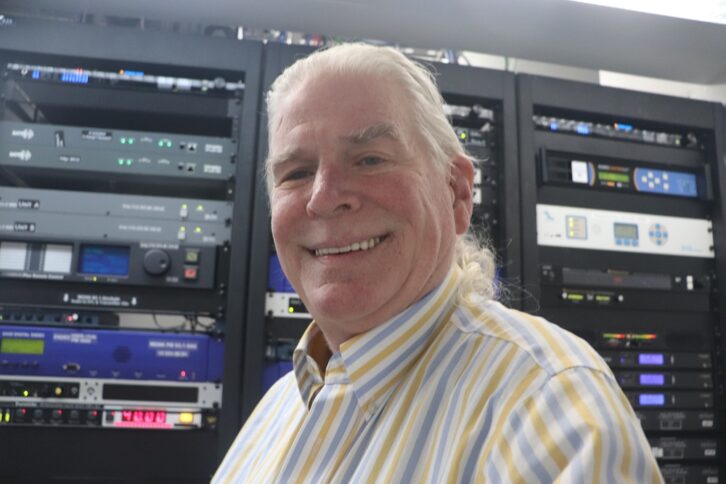
On the theme of planning, Gary Zocolo said it’s crucial to define your mission and list the needs your console must meet.
“Large busy studios likely require more channels and capabilities in the mix-minus realm. Other production studios likely require much less capability unless they are also to be used as backup air studios,” he said.
“Additionally, consideration of data infrastructure is keenly important. Switches, subnets and access control are significant. The physical infrastructure requires cost analysis before construction. We used fiber to every studio for the content playout system. People should pay attention to manufacturers’ and experts’ best practice procedures.”
Said Rob Bertrand, “‘Remote’ is probably the most important word to be thinking about in terms of studios at this time. In the short term, how easy is it to manage remote sources and integrate with remote content delivery systems? How easily will a console investment transition to a virtual solution, whether that virtual solution is hosted within a broadcaster’s infrastructure or by a third-party provider? And how easy is it to remotely support the console and related systems, given the shrinking broadcast engineering workforce?”
It’s likely, he said, that the people taking care of the studio in the future — regardless of how it will be cared for today — will not normally be in the same room as the equipment, whether it’s physical or virtual.
“Who will those people be? And how widely supported is the console solution you are considering? The more support options and methods, the better.”
